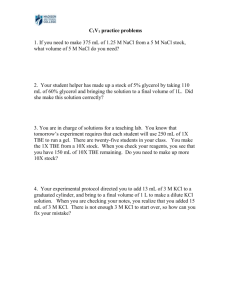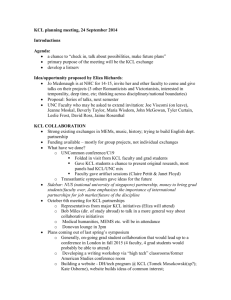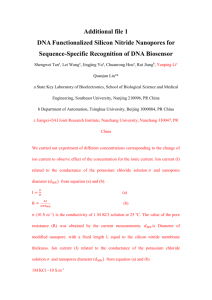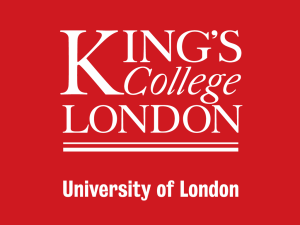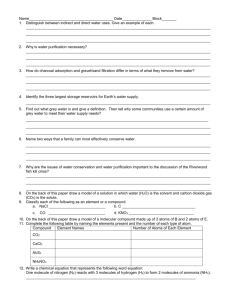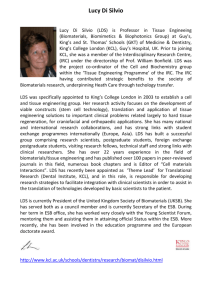Word file (114 KB )
advertisement
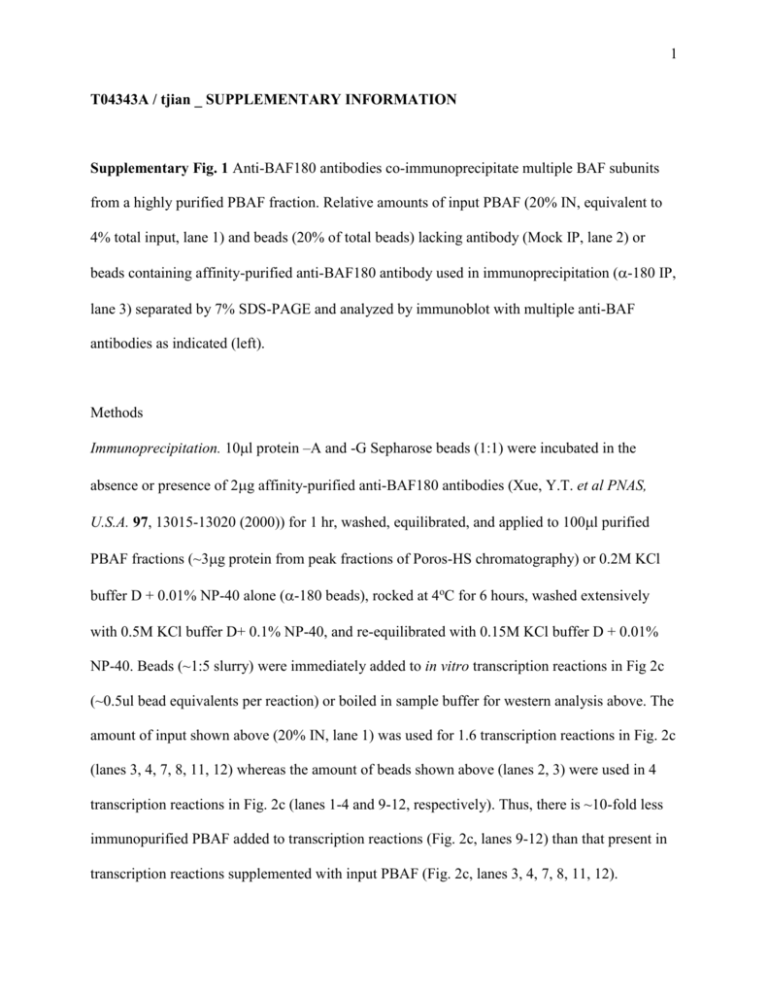
1 T04343A / tjian _ SUPPLEMENTARY INFORMATION Supplementary Fig. 1 Anti-BAF180 antibodies co-immunoprecipitate multiple BAF subunits from a highly purified PBAF fraction. Relative amounts of input PBAF (20% IN, equivalent to 4% total input, lane 1) and beads (20% of total beads) lacking antibody (Mock IP, lane 2) or beads containing affinity-purified anti-BAF180 antibody used in immunoprecipitation (-180 IP, lane 3) separated by 7% SDS-PAGE and analyzed by immunoblot with multiple anti-BAF antibodies as indicated (left). Methods Immunoprecipitation. 10l protein –A and -G Sepharose beads (1:1) were incubated in the absence or presence of 2g affinity-purified anti-BAF180 antibodies (Xue, Y.T. et al PNAS, U.S.A. 97, 13015-13020 (2000)) for 1 hr, washed, equilibrated, and applied to 100l purified PBAF fractions (~3g protein from peak fractions of Poros-HS chromatography) or 0.2M KCl buffer D + 0.01% NP-40 alone (-180 beads), rocked at 4oC for 6 hours, washed extensively with 0.5M KCl buffer D+ 0.1% NP-40, and re-equilibrated with 0.15M KCl buffer D + 0.01% NP-40. Beads (~1:5 slurry) were immediately added to in vitro transcription reactions in Fig 2c (~0.5ul bead equivalents per reaction) or boiled in sample buffer for western analysis above. The amount of input shown above (20% IN, lane 1) was used for 1.6 transcription reactions in Fig. 2c (lanes 3, 4, 7, 8, 11, 12) whereas the amount of beads shown above (lanes 2, 3) were used in 4 transcription reactions in Fig. 2c (lanes 1-4 and 9-12, respectively). Thus, there is ~10-fold less immunopurified PBAF added to transcription reactions (Fig. 2c, lanes 9-12) than that present in transcription reactions supplemented with input PBAF (Fig. 2c, lanes 3, 4, 7, 8, 11, 12). 2 Purification of PBAF. All chromatography was in buffer D (25mM HEPES (pH 7.9), 0.2mM EDTA, 2mM MgCl2, 10% glycerol) plus KCl as indicated. Nuclear extracts were prepared from 96 to 172L of HeLa cells, applied at 15mg/ml in 0.2M KCl to P11-phosphocellulose (Whatman), washed with 0.3M KCl and 0.5M KCl, eluted in 1.0M KCl, and dialyzed to 0.1M KCl. This P1M fraction was applied to Poros 20 HQ (PerSeptive Biosystems), subjected to a 4 column volume linear gradient from 0.1M to 0.4M KCl , washed, and developed with a 16 column volume linear gradient from 0.4M to 1.0M KCl . Transcriptionally-active HQ fractions eluting from 0.45-0.7M were pooled, diluted to 0.15M KCl, applied to Poros 20 HE-1 (PerSeptive Biosystems), subjected to an 8 column volume linear gradient from 0.15M to 0.35M KCl, washed, and developed with a 20 column volume linear gradient from 0.35M to 0.85M KCl. Transcriptionally-active HE fractions eluting from 0.38-0.45M KCl were pooled, diluted to 0.2M, re-applied to Poros 20 HE-1 and eluted with 0.8M KCl. This protein peak was separated on a Superose 6 HR10/30 sizing column (Amersham-Pharmacia) equilibrated in 0.15M KCl buffer D + 0.1mg/ml lysozyme + 0.0025% NP-40. Transcriptionally-active fractions eluting at 1.5-3 MDa were applied to Poros 20 HS (PerSeptive Biosystems), developed with a 25 column volume linear gradient from 0.15M to 0.85M KCl buffer D + 0.01% NP-40; lysozyme was added to collection tubes to 0.1mg/ml. Peak transcriptional cofactor activity eluted from Poros HS at 0.53-0.62M KCl. Supplementary Fig. 2 Western blot and SDS-PAGE silver stain analysis of sequential chromatography steps for purification of SWI/SNF. Total protein loaded in each lane: 4g dialyzed input fraction (0-50% (NH4)2SO4 pellet, lane 1), 0.4g HQ fraction (lanes 2,3), 0.4g 3 HE fraction (lane 4), 1.0g HE fraction (lane 5), 0.3g low molecular weight standards (Biorad, lanes 6,9), 0.4g Superose 6 fraction (lanes 7,8), 0.2g HS fraction (lane 10) separated by 7% SDS-PAGE. Both BAF180 and BAF250 polypeptides co-purified with BRG1 and other BAFs through P11 and Poros-HQ chromatography (lanes 1, 2). Subsequent Poros-HE chromatography provided a significant separation of the two complexes (lanes 3, 4). Although further purification from other contaminating polypeptides was achieved with size exclusion chromatography (lanes 5, 7) both PBAF and SWI/SNF behaved as ~2MDa complexes. A final Poros-HS chromatography step was used to further separate SWI/SNF (lane 10) from any residual PBAF. Direct comparison of our most purified fractions by SDS-PAGE silver stain and western blot analysis indicated that our purified SWI/SNF is present in 1.5- to 2-fold greater concentration than PBAF (Figs. 3b, c). Methods Purification of SWI/SNF. All chromatography was in buffer D (25mM HEPES (pH 7.9), 0.2mM EDTA, 2mM MgCl2, 10% glycerol) plus KCl as indicated. 0.5M KCl fractions from P11 chromatography (described above) were precipitated in 50% (NH4)2SO4, dissolved in buffer D 0.05M KCl to 1/10th initial volume, dialyzed to 0.1M KCl, applied to Poros 20 HQ, and developed with a 25 column volume linear gradient from 0.1M to 0.75M KCl. BAF-containing HQ fractions assessed by immunoblot eluting from 0.55-0.61M were pooled, diluted to 0.15M KCl, applied to Poros 20 HE-1, developed with a 25 column volume linear gradient from 0.15M to 0.65M KCl. BAF-containing HE fractions assessed by immunoblot eluting from 0.29-0.37M KCl were pooled and separated on a Superose 6 HR10/30 sizing column equilibrated in 0.15M KCl buffer D + 0.1mg/ml lysozyme + 0.0025% NP-40. BAF-containing fractions assessed by 4 SDS-PAGE and silver staining eluting at 1.5-3 MDa were applied to Poros 20 HS, developed with a 25 column volume linear gradient from 0.15M to 0.65M KCl buffer D + 0.01% NP-40; lysozyme was added to collection tubes to 0.1mg/ml. Peak BAF (SWI/SNF) fractions eluted from Poros 20 HS at 0.4-0.46M KCl as assessed by SDS-PAGE and silver staining. Supplementary Fig. 3 ARC and PBAF requirement for chromatin-dependent activated transcription by human enhancer binding factors. Primer extension of reconstituted in vitro transcription reactions with Sp1 and SREBP-1a as indicated (top) together with 1nM PBAF (lanes 5-8, 13-16, 21-24, 29-32) and ARC+CRSP (ARC, lanes 3-6, 11-14, 19-22, 27-30) programmed with pre-assembled chromatin templates (lanes 1-16) or naked DNA templates (lanes 17-32). Methods In vitro transcription reactions contained: 0.5nM DNA templates, 0-5nM Sp1 and SREBP-1a as indicated, 40nM rIIA, 5nM rIIB, 20nM rIIE, 20nM rIIF, 2nM RNA Pol II, 0.1nM TFIIH, and 0.6nM TFIID in a 25 l volume. Non-limiting amounts of coactivators ARC+CRSP (0.5nM ARC and 6g/ml of a CRSP-containing fraction described in Näär, A. M. et al. Genes Dev. 12, 3020-31 (1998)) were used as indicated. Chromatin or mock (naked DNA) templates were prepared as described in Rachez, C. et al. Nature 398, 824-828 (1999), activators were added after 5.5 hrs chromatin assembly, pre-incubated 10 min prior to addition of general factors, coactivators, and PBAF (~1nM as indicated), further incubated at 28.5oC 15 min prior to NTPs (0.5mM final) and incubated 30 min before RNA isolation and primer extension.
